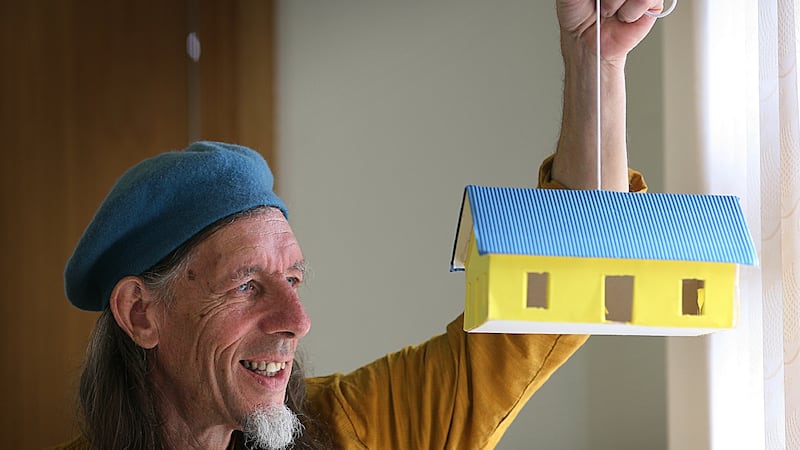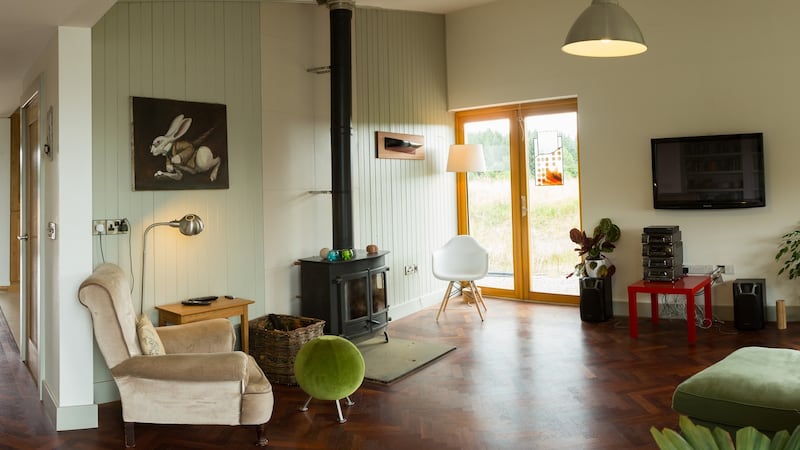For those of us with a penchant for compost toilets, hemp insulation and natural timber, this weekend is a chance to satiate a craving, to get to explore the cob walls and off-grid solutions of the northwest’s ecological trailblazers. The Green Door Festival of Rural Architecture and Design features 39 eco-homes in Leitrim and Sligo that are open to the public today and tomorrow, alongside a packed schedule of workshops, talks, demonstrations and tours in the Glens Centre and Leitrim Sculpture Centre in Manorhamilton, The Dock in Carrick-on-Shannon and The Organic Centre in Rossinver.
Over its three previous iterations, Green Door has presented an ideal opportunity to peek inside some of the homes that are implementing the cutting-edge environmental and lifestyle solutions that the rest of us only dream of. It offers the best chance to see inside genuine examples of innovative, affordable and sustainable rural architecture built by the pioneering eco-builders of the northwest.

The individual houses open for just a few hours and are often hidden away in drumliny nooks and wooded crannies, and so it’s worth selecting the houses you most want to see and mapping out routes beforehand, or alternatively (and more ecologically) taking one of the bus tours that leave from both Manorhamilton and Carrick-on-Shannon. Or, to be most ecologically purist, join a cycle tour by the architect Colin Bell around some homes in the Dromahair area, including Johnny Gogan’s Cob Studio, Frank Clinton’s modern new-build and Brid O’Donghue’s geothermally-heated home designed with help from Peter Cowman’s Living Architecture course.
Architectural concerns
This year’s festival has a major exhibition, “Thinking, Living, Dwelling”, at its core in which a range of artists explore architectural concerns at The Dock in Carrick-on-Shannon. There will also be talks on kackelofen stoves, China’s floating homes and air-tight buildings; with demonstrations of cob-building, and lime-plastering techniques and a drawing workshop by Kiera O’Toole in which participants visit some of the homes to sense how the architecture affects them and communicate their reactions through drawing.
Some of the houses spark envy, others simply inspire. There’s a covetable timber house on stilts with a butterfly roof, designed and built by Max Brosi, a local furniture maker and wood turner. It’s heated by a central wood-burner which is fuelled by locally coppiced alder and insulated with sheep’s wool.

On a more humble scale is the converted judo hall in Cloghboley, Co Sligo, which has been transformed into a cosy, low-tech home made almost entirely of recycled materials (including recycled paper insulation and rainwater harvesting and re-using system), surrounded by an orchard, a vegetable garden and trees planted for future fuel and biodiversity. The aim was to provide the owners, Brigit and Ron, with an affordable, warm space for their retirement, one that would allow them to be virtually self-sufficient and to live comfortably on an income of €6,000 a year.
‘Building-biology’
Frank Albrecht’s solid timber, German-made home in Rossinver is a bold statements of principle, with its eccentric electrical circuitry that follows the principles of “building-biology” to avoid “electro-smog”, and its alluring exterior which naturally alters under the influence of Leitrim’s wind and rain.

Gaby and Hans Wieland’s renovated stone cottage near Cliffony is an extension of their lives as former cheesemakers, sourdough bakers and market gardeners. Their passively heated extension looks out on to their vegetable garden, polytunnels and kitchen garden school, where they teach sustainable gardening, foraging, cooking and fermenting.
Ultimately, the festival highlights the diversity of ways in which people choose to renovate, design, build and live in rural Ireland with the future and the environment in mind. It’s an opportunity to meet homeowners and builders, architects and suppliers to get first-hand, honest information about the intricacies of sustainable planning, designing and building, and the highs and the lows of implementing these practices. It should be a fun weekend – and one that might also inspire.












